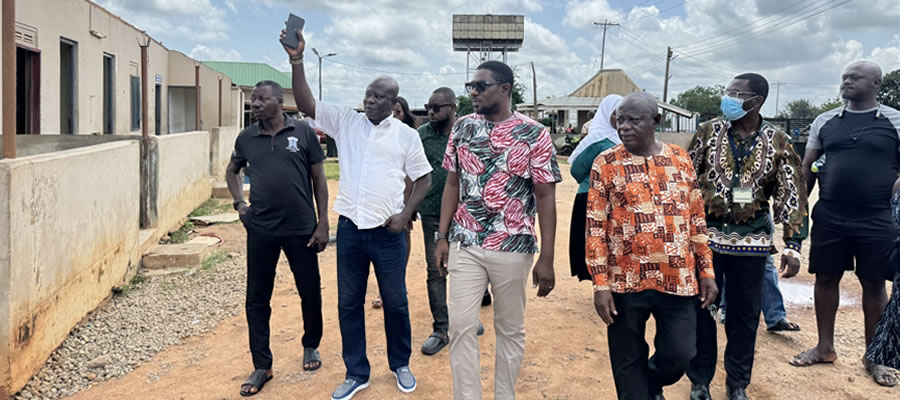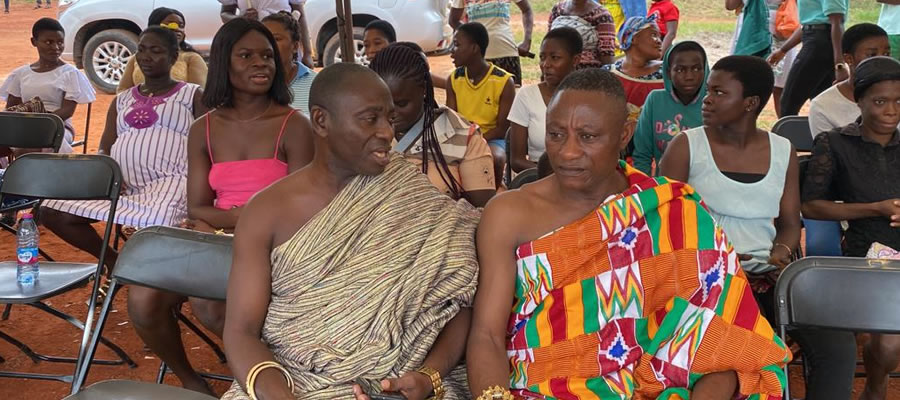

The District has one (1) Hospital, Four (4) Health Centres, Four (4) Clinics, Six (6) Maternity Homes and 40 trained traditional birth attendants. The Hospital is located at Nkawie-Toase.
Malaria topped the reported cases within the district with 81,780 cases in 2009. It was followed by Acute Respiratory Infection which recorded 21,478 cases. Diahorrea numbered 8,626 cases. Hypertension recorded 6,790 cases while skin diseases and ulcer numbered up to 6,678 cases. Acute urinary tract infections recorded 6,649 with rheumatic and joint pains recording 4,721 cases. Intestinal cases were 3,530 with diabetes making up 2,124 cases. Home accident and injuries were recorded at1,770 cases.
Most of the diseases are due to poor environment and diet. A lot need to be done on our bad environment –refuse disposal sites, places of convenience, overgrown weeds which breed Mosquitoes and eating habits.
Hypertensions normally do not come under the top ten diseases. Its current inclusion in the top ten means most inhabitants are getting this affluent disease, which we should be worried about. The eating habits of the people in the district have changed and people are taking in more of high Cholesterol foods than the local fiber foods.
Buruli Ulcer, though not one of the ten top diseases is endemic in the district with high reported cases of 85 in 2009. All these diseases are of public health importance.
Antenatal service coverage recorded 43.3% (3,102) with average visit of 3 per client, which is low compared with an average of 4 per client especially with the NHIS and free antenatal care. Late teenagers recorded 12.3% (382) of the total antenatal registrants. 22.7% of pregnant women registered with Anaemia.
About 25.6% of women deliver in health facilities. Out of the number 2.1% (32) had still births (babies died at birth). Women in labour report to health facilities late, others use all sorts of herbal preparations during labour before seeking health care and others never visited the health facilities during pregnancy.
Immunization coverage for BCG, Measles, OPV, Pentavalent, T. T. and Yellow Fever was about 80.3% on the average. Under- five Mortality rate in the district in 2008 was 10.7, and Maternal Mortality ratio (number of deaths due to pregnancy and child birth per 1000 live births) was 2. The prevalent rate for HIV/AIDS in the District in 2008 was about 3.6%. Awareness level in the District is high;, this is beginning to translate into behavioral change on safe sex practices and abstinence.
Voluntary Counseling and Testing (VCT) and Prevention of Mother to Child Transmission (PMTCT) services are available at the Nkawie Hospital.
Some of the people who are living with HIV/AIDS receive Anti retroviral treatment at the Okomfo Anokye Teaching Hospital in Kumasi. The District has a District Aids Committee (DAC) and a District Responses Initiative Management Team (DRIMT). These committees are responsible for the monitoring and co-ordination of HIV/AIDS activities in the District.
Availability of Health Professionals
The district has a Doctor/Population ratio of 1:39,407 and a Nurse/ population ratio of about 1:3329
There are 3 medical Doctors, 51 nurses and 143 auxiliary staff working to provide quality health care services in the district. The district has a Doctor/Population ratio of 1:51,013 and a Nurse/ population ratio of about 1:3,001. Whiles the Doctor /population ratio is far below the required standard of 1:25,000, the Nurse /Population ratio is much closed to the required standard of 1:3000. There is therefore more stress on the doctors, and this has implications for quality health care delivery in the district.
The district hospital lacks critical staff of Anaesthetist and Physiotherapist whose services augment the work of the Medical superintendent.
Even though there is a better nurse staffing situation in the district the District hospital has no Matron –Senior Nursing Officer or Principal Nursing Officer to manage nursing service in the hospital, which is critical in every hospital.
The district health sector also requires more accounts staff to coupe with the work load as a result of the implementation of the National Health Insurance scheme.
District Health Insurance Scheme
The District in its efforts to make health care services accessible to majority of people, has established a District-Wide Mutual Health Insurance scheme. The scheme is fully operational with a total of 90,412 people as at December, 2005. This represents 60% of the total population of the district. Out of the total registered members, 32,989 are fully paid and exempt members. The break downs of the fully paid and exempt members are as follows: Informal sector (fully paid)* SSNIT Contributors* SSNIT Pensioners* Children under 18 years
Challenges
The district hospital lacks critical staff of Anaesthetist and Physiotherapist whose services augment the work of the Medical superintendent.
The District hospital is housed in the old district assembly building which does not befit a district hospital status. The hospital has no structures to warrant a district hospital status. The hospital has only 39 beds with one ward for both women and children and another ward for males. A 60-bed structure for a small hospital of this nature will be the ideal.
The hospital also lacks basic facilities like blood bank, X’ray department, Kitchen, Laundry, Mortuary etc. The hospital depend on the Okomfo Anokye Teaching Hospital in case a client needs blood urgently, this arrangement is not the best considering traffic jam on the Kwadaso road. Currently the hospital theater is just a room divided with plywood, and a room improvised for management of surgical cases, especially Buruli Ulcer.
The hospital is exposed to all sort of vices because the facility because the facility is not secured thus people move in and out anytime giving the security officers much task. The Abuakwa Health Centre has an average of 100 patients a day. The structure is still the old health post with only a recovery ward added. Most clients are seen as out patients and those needing admission are referred to other facilities. It is a 10-bed facility.
By the high attendance and workload, there is the need for expansion in infrastructure and posting of Clinicians to reduce the client load of the Principal Medical Assistant. None of the institutions have a decent residential accommodation for staff and even in the district hospital there is none to handle emergencies. All the public health facilities need expansion in infrastructure and equipment to enable them provide satisfactory health care services.
Date Created : 11/24/2017 5:21:40 AM












 facebook
facebook
 twitter
twitter
 Youtube
Youtube
 +233 593 831 280
+233 593 831 280 0800 430 430
0800 430 430 GPS: GE-231-4383
GPS: GE-231-4383 info@ghanadistricts.com
info@ghanadistricts.com Box GP1044, Accra, Ghana
Box GP1044, Accra, Ghana